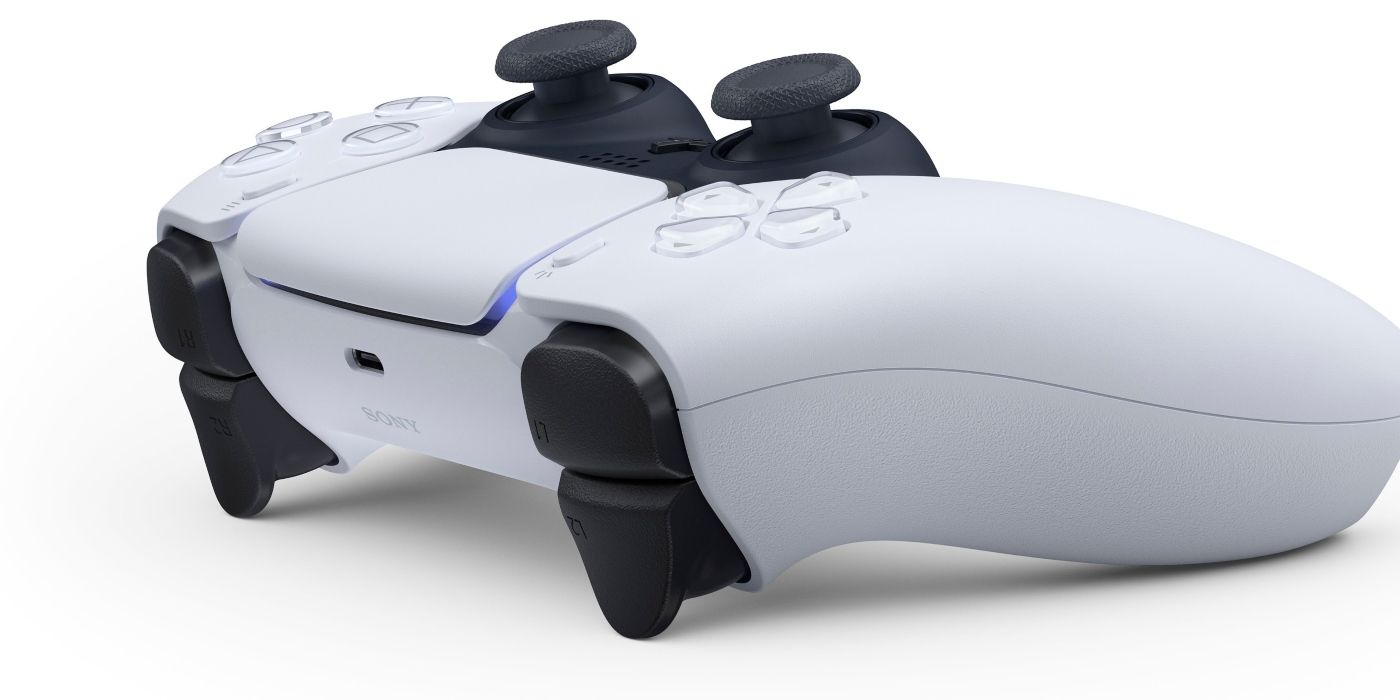Sony's DualSense PlayStation 5 controller features several new technologies that distinguish it from the DualShock 4, including what the company calls "adaptive triggers." These triggers allow PS5 players to "feel the tension" of in-game actions, but many PlayStation fans are likely wondering how this new feature will improve gameplay. Luckily, both Sony and other controller manufacturers have already provided some examples.
The PS5 controller's announcement surprised some PlayStation fans, as the DualSense's design differs greatly from past PlayStation controllers. Its two-tone coloration strays from Sony's usual monotone approach, but more significant is its shape. Rather than the knobby, bone-like design of the DualShocks, the DualSense is rounded, drawing plenty of comparisons to Xbox's controllers from the gaming community.
According to Sony, this rounded design was chosen in order to accommodate all of the controller's new hardware. This includes the DualSense's haptic feedback rumble tech, which will allow developers to give players a physical sense of traveling over in-game surfaces, like the slick feeling of ice or the sticky feeling of mud. Haptic feedback could also improve the immersion provided by PS5 controller's adaptive triggers, explained below.
How The PS5's Adaptive Triggers Could Enhance Immersion
The DualSense's adaptive triggers, as Sony described them back in October, can be programmed by developers to provide varying levels of resistance, depending on what's going on in-game. Microsoft implemented its own immersion-enhancing trigger designs with the Xbox One controller's "impulse triggers," which incorporate haptic feedback motors to provide sensations like the locking of ABS breaks and the beating of a character's heart while aiming down a weapon's sights. It's not clear if the DualSense's haptic feedback motors will be tied to the triggers in the same way, but the adaptive triggers' resistance can be used to provide a different kind of feedback.
In its exclusive PS5 reveal, WIRED elaborated on how this could work. When a player character draws a bow, for example, the DualSense could be programmed to increase the tension required to push the trigger down as the bowstring gets more taut, just like an actual bow. Sony also gave the example of "accelerating an off-road vehicle through rocky terrain." Perhaps this would involve the trigger being easy to push down at first - accompanied by heavy rumbling from the haptic feedback motors - as the car struggles to find purchase on the rocks, then it would suddenly tense up as the car gains traction and begins moving.
It's easy to think of a few additional ways the adaptive triggers could add immersion: A minigun could require more trigger pressure to fire at first, gradually becoming easier to pull as the gun fires faster. A manual-transmission vehicle could cause the trigger to tense up as players approach the need to shift gears, releasing the tension if they press the gear-shift button. Pulling down the triggers to control the roll of a paraglider could require significant force, with the wind resisting players' tugs. These examples are enticing, but just like haptic feedback, it's not clear if most developers outside of Sony's first-party studios will have the time, resources, or incentive to actually implement adaptive trigger responses, especially since Microsoft's Series X controller doesn't seem to have the same capabilities.
The PlayStation 5 is scheduled for a holiday 2020 launch.


